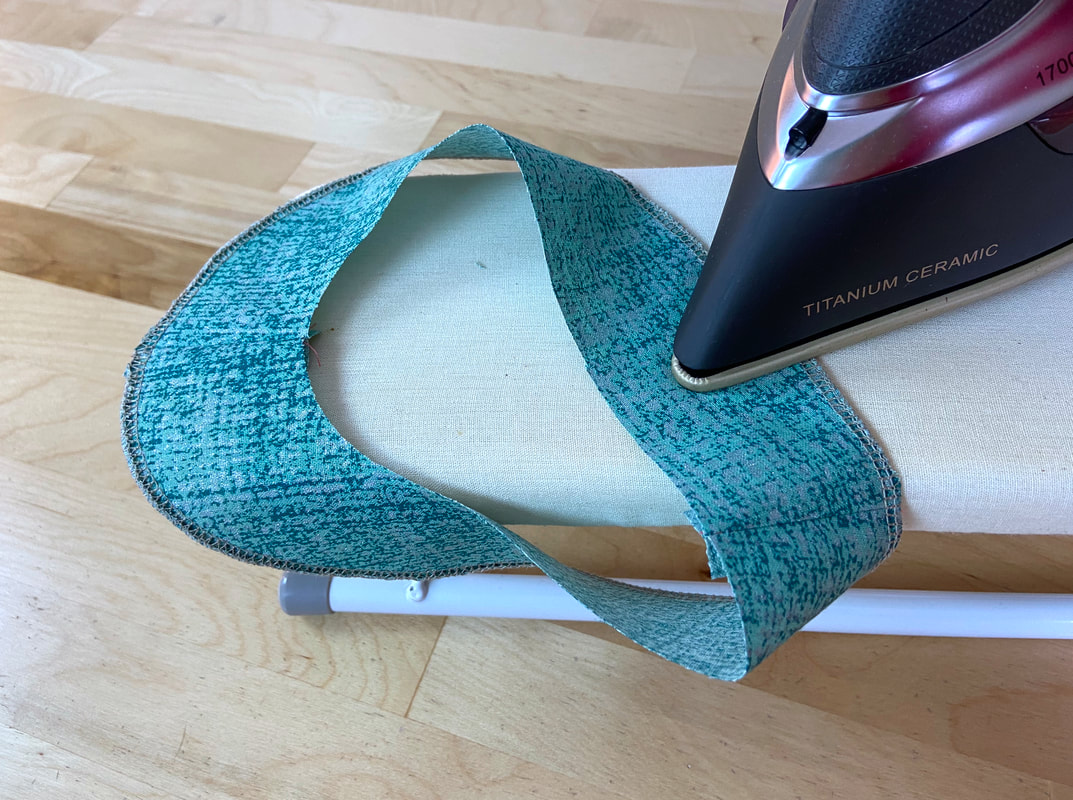The overedge stitch finish is the easiest, and perhaps the most widely-used technique. It requires the use of a finishing stitch such as zigzag or serging (if you own an overlock machine).
The stitch is simply applied along the outer edge of the facing to contain them from unraveling and simultaneously give the facing a more finished look.
To Complete The Serged Facing Finish:
1. Make sure the facing seams are stitched and ironed prior to starting the serging application.
2. With the facing layer on its wrong side, apply a serging stitch along the facing’s outer raw edge, keeping all crossing seam allowances flat in the process.
If using a zigzag stitch: switch the stitch setting to a denser zigzag application. Apply the zigzag stitch at about 1/8” away from the facing's edge. Carefully trim the fabric raw edge close to the zigzag stitch being very careful not to accidentally slash through any of the stitching.
Note: For increased durability, overlap the beginning and end of the serging stitch. Doing so will lock the stitching thus prevent it from coming undone during the garment’s wear and care.
3. As a final step, iron the serged facing edge for a smooth, clean finish.
When to use: The overedge-stitch technique is most suitable for fabrics that fray/unravel when cut. It works just as well with lightweight fabrics as it does with medium and heavyweight ones. When finished, the facing lays completely flat against the garment layer and for the most part, does not leave an impression on the right side of the garment.








